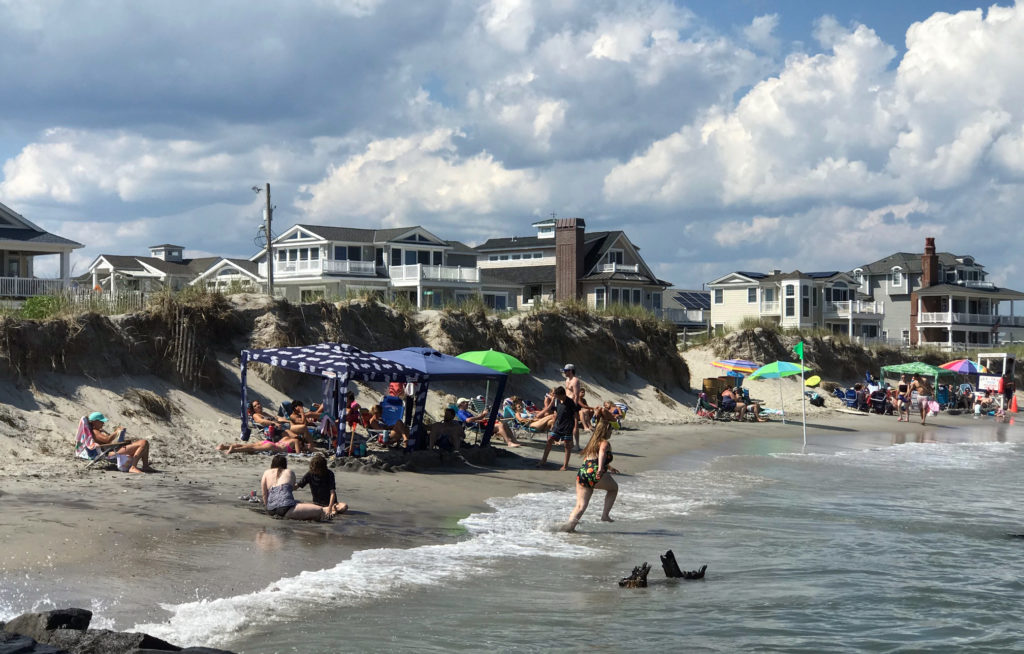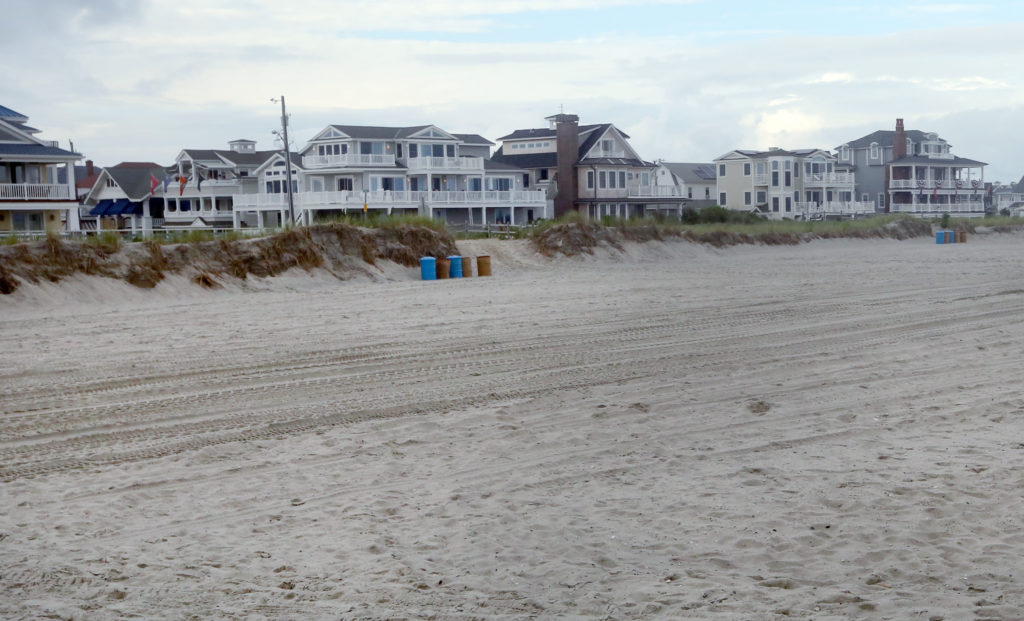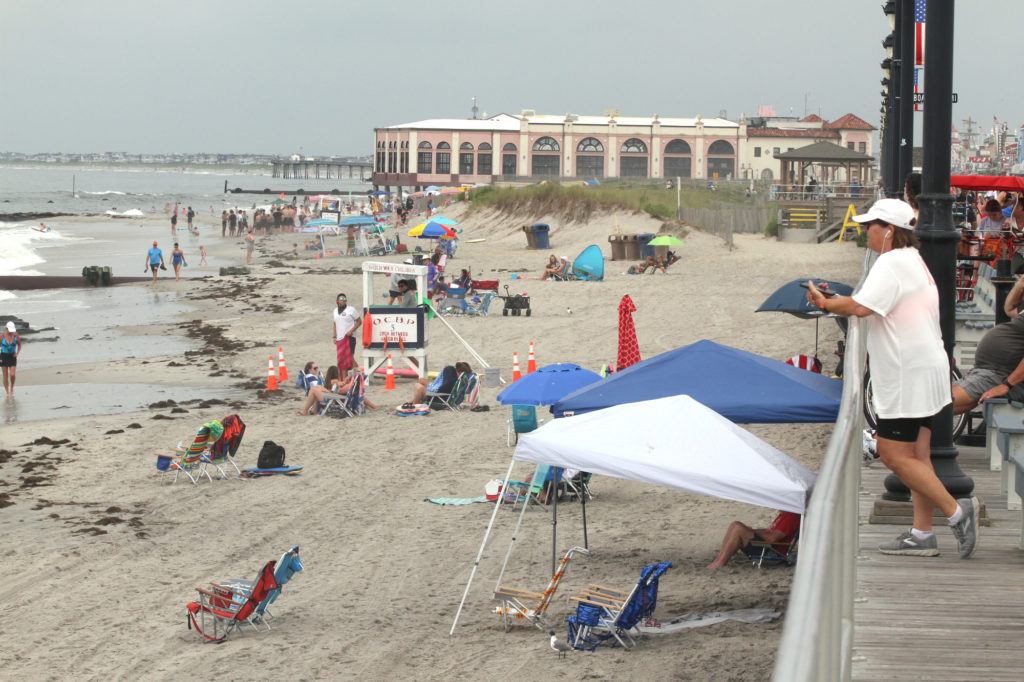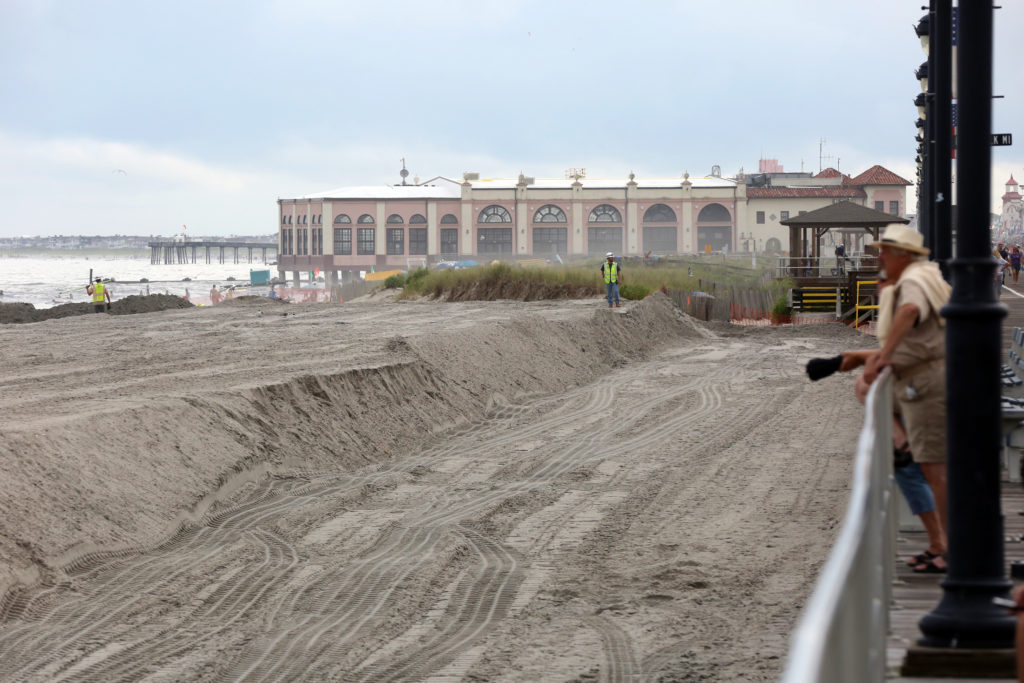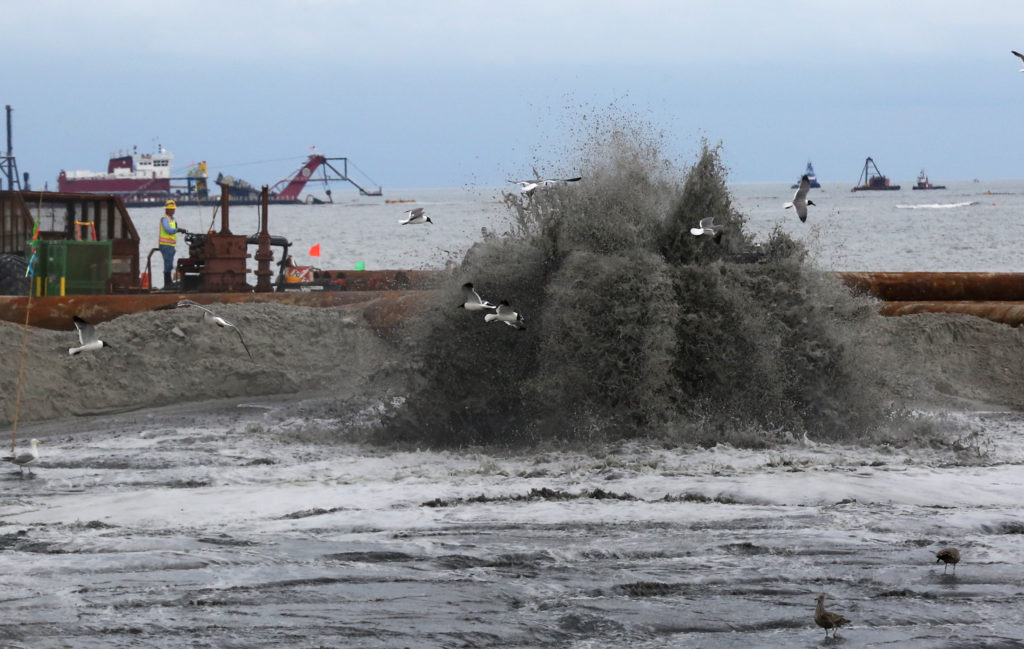
OCEAN CITY — Water gushes through the bars of a 10-foot square steel box near Brighton Avenue on the north end of the island, spewing muddy sand that was pumped from a dredge moored off the beach in the Great Egg Harbor Inlet. Sea gulls hover and dive for the sea life mixed in with the sand.
Beaches in Ocean City are in the midst of a feeding frenzy. And not just the gulls are being fed.
A beach replenishment project is pumping 1.6 million cubic yards of sand across 2.1 miles of beach on the north end of the island from Seaview Avenue to 13th Street. It’s enough sand to fill 114 million fully loaded dump trucks forming a line from Atlantic City to South Carolina. It’s a lot of sand.
And the beaches needed it. The beach at First Street was so eroded that 10-foot-high cliffs formed at the beach entrances, closing the walkway to beachgoers. A similar scene could be found near Seventh Street.
The Ocean City project is part of a 50-year agreement between the city and the U.S. Army Corp of Engineers, which has returned every three years since 1992, including this year, for what is the 10th replenishment project, according to Doug Bergen, the city’s public information officer. After Ocean City, the beach project will move down the coast to Upper Township’s Strathmere section, and finally Sea Isle City.
The main purpose of the dredging by the Army Corps is to protect property, Bergen said while standing by the massive effort of land movers, front-end loaders and heavy equipment pushing and spreading the sand.
“It’s not necessarily to widen the beaches, but that’s a great side benefit for Ocean City,” he said.
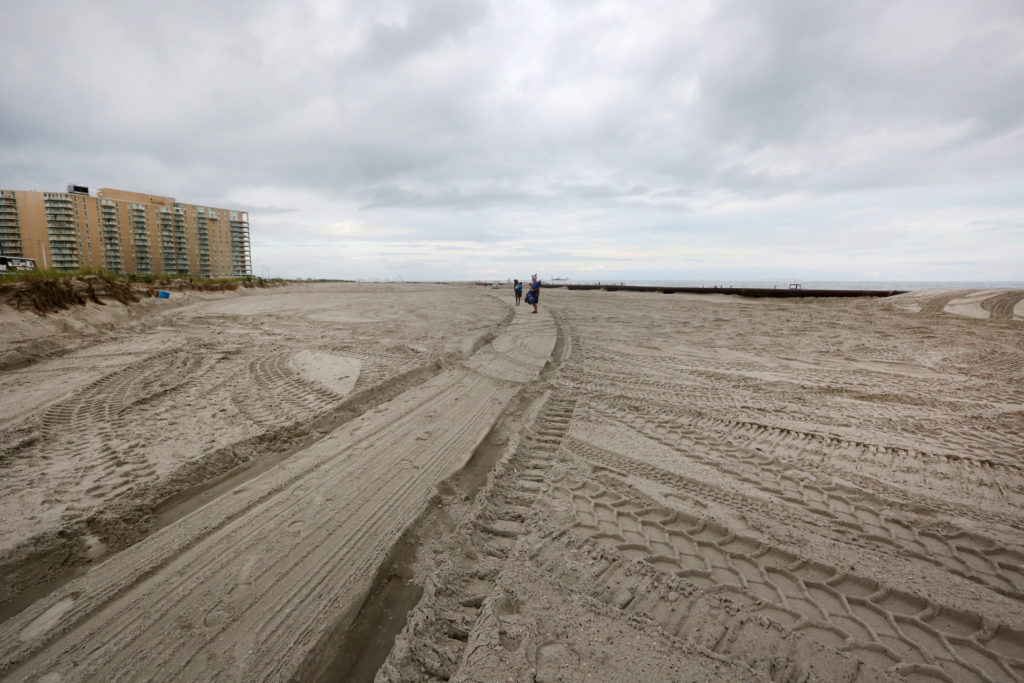
The beach level will be raised to a height of 10 feet to create a dune system to protect the property inland.
Driven by greenhouse gases, our planet is becoming warmer, which in turn is leading to a melting of a polar ice cap. Those forces have led to rising sea levels and the conditions leading to more frequent and stronger storms, all factors contributing to beach erosion and begging the question: Can beach projects like the one in Ocean City keep up?
Overpowering ocean
“The city is preparing for rising seas and global warming in a number of different ways,” Bergen said.
Along with reinforcing barriers, like the beach project, the city is concentrating on elevating homes and roads wherever possible, using building elevation requirements three feet over the level of a 100-year storm flood. Tens of millions have been invested in pumping stations to push flood water out, Bergen said, and the city is experimenting with creating living shorelines on the back bays to restore some of the wetlands that act as buffers to rising seas.
“We take it on faith that rising seas are on the way,” he said.
It’s the northeast ends of the islands in South Jersey that are “hot spots,” areas like the one being rebuilt in Ocean City now, that face the most threats of erosion, said Stewart Farrell, director of Stockton University’s Coastal Research Center.
The middle of Ocean City, starting around 20th Street, has not had sand added to it since 1991. The same is true for the other barrier islands. If you live in the middle of the island, a hurricane is a bad day at the beach, Farrell said. If you’re at the northern end, you’re in a more direct path and can watch the ocean chew away at the beach. Fortunately, beach replenishment projects like Ocean City’s have had a positive effect.
“The beaches have gained enormous amounts of material,” Farrell noted from his surveys. Any beach loss from erosion ends up as shoals off the coast, some of which are mined for future beach projects.
Farrell’s team from Stockton has conducted surveys in the spring and fall every year at 171 sites from Raritan Bay to the Delaware Bay since 1986.
For now and the foreseeable future, beaches in South Jersey are in good shape, he said, better than they were 30 years ago.
“Compared to the way they were in 1975,” he said, “the beaches are phenomenally better off.”
But eventually, Farrell said, sea level rise and intense storms will overpower the beach barriers and push the shoreline inland.
“There will be a new shoreline in Ocean, Atlantic and Cape May counties,” he said. “The Garden State Parkway could be the beach ridge, maybe, in Cape May County. The warmer the ocean, the nastier things get.” But when that will happen is unknown, depending on how fast sea levels rise, and there are many estimates.
The business of sand
The state Department of Environmental Protection agrees.
“We’ll have to put more sand on the beaches. We’ll have to do it more frequently. That will be the challenge of the future,” said David Rosenblatt, New Jersey’s chief resilience officer and the DEP’s assistant commissioner for climate and flood resilience.
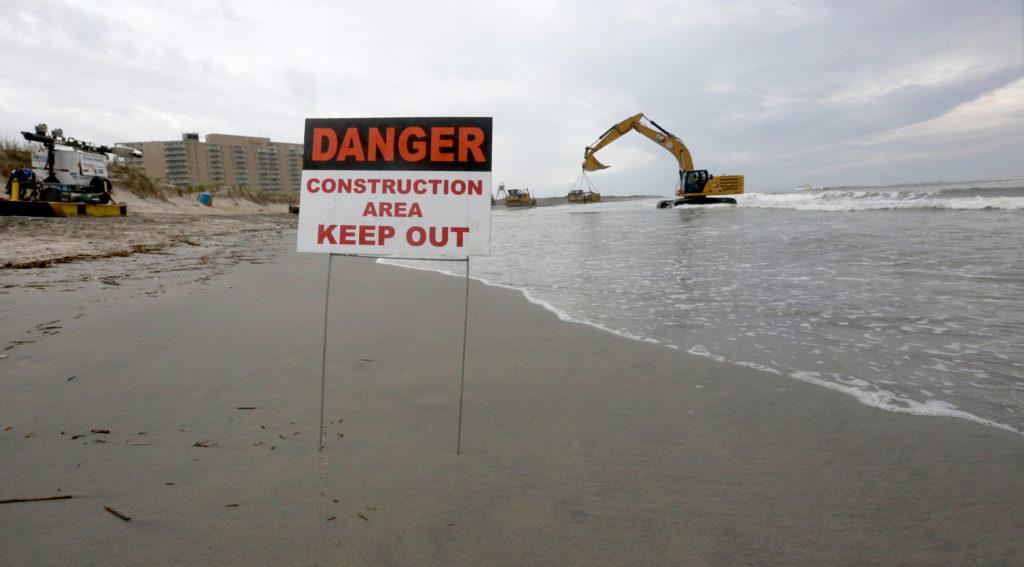
Rosenblatt said the two-pronged threat of sea level rise and more intense storms will change the design of beach projects.
“It will be harder and harder as we move forward to maintain the beaches, certainly as they are now, and maintain them as a shore protection structure,” said Rosenblatt. He said the DEP can’t predict when sea levels will increase to property-threatening levels, but it monitors the research and findings from Rutgers University scientists in making plans.
Building beaches is big business.
Great Lakes Dredge & Dock Company of Oak Brook, Illinois, the company at work in Ocean City, was recently awarded a $23.8 million contract to add 2 million cubic yards on beaches in Atlantic City, Ventnor, Margate and Longport, again as part of agreements the corps has with those towns.
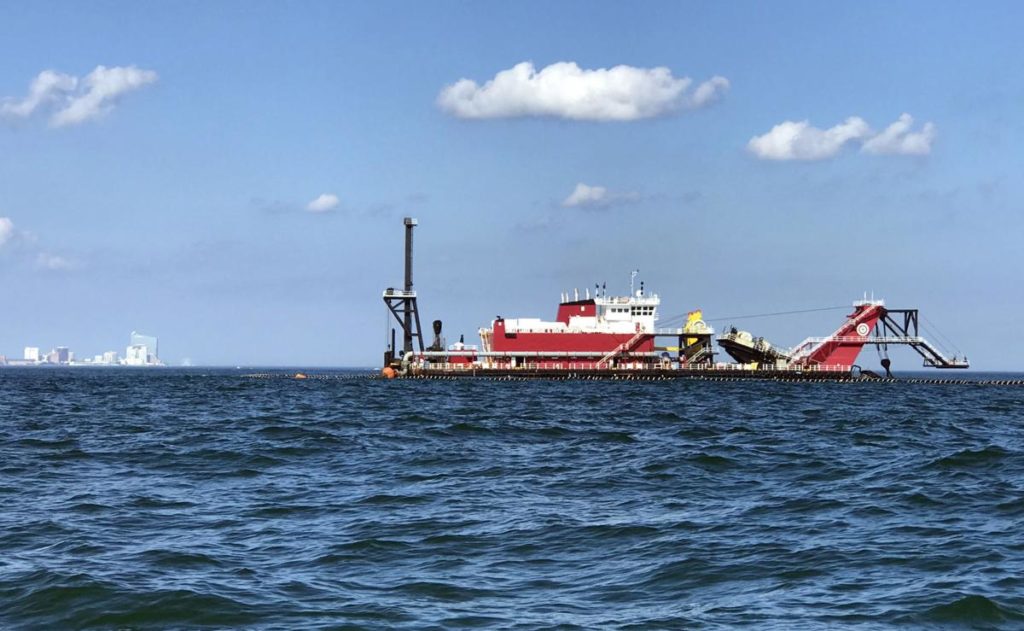
The federal government picks up 65% of the cost of shore protection projects, the remainder being split between state and local municipalities. The total bill for the Ocean City-Strathmere-Sea Isle City beach replenishment project is $37 million.
Some shore towns don’t feel the need for that cost. Margate fought the state over a dune protection project that was ultimately built in 2018.
“Whether towns want them right now, or whether they think they need them,” Rosenblatt said, “as sea level rise increases, you’ll see some change in opinions about the projects.”
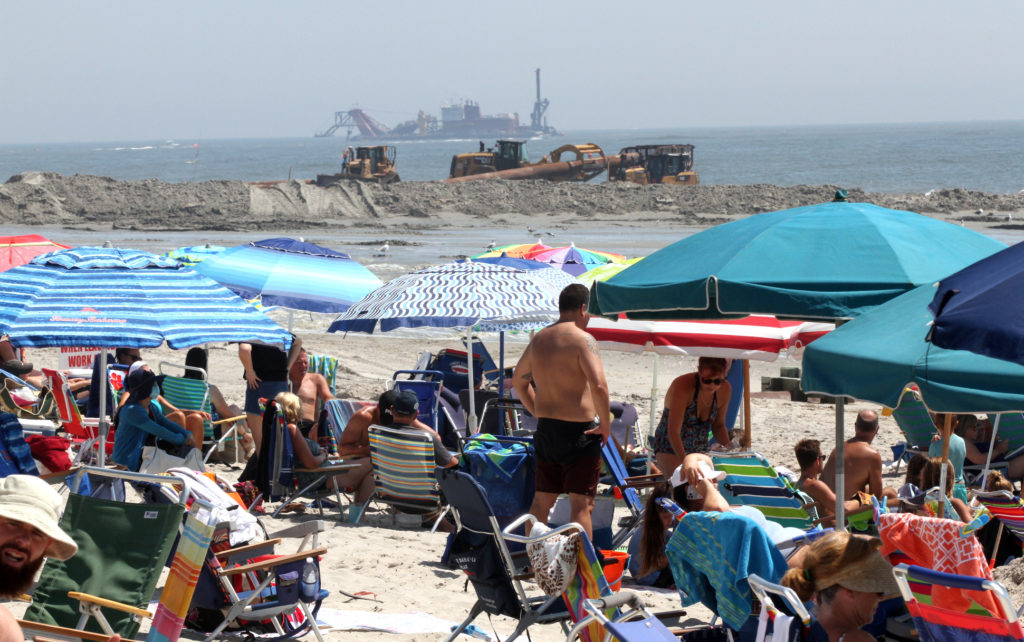
An even bigger threat exists in the back bays, according to Farrell, who said an increase of two feet of sea level rise will put high tide in the backyards of homes along the water every day. An increase of six feet in sea level rise will put those bayshore homes underwater.
Although cutting back on greenhouse gas emissions would help and slow the rise in sea levels, Farrell said it would not stop it. Even if we were able to stop all greenhouse gas emissions immediately, he believes sea levels will continue to rise until it slowly begins to abate and reverse itself.
“If the global temperatures were dropping, sea levels would drop also,” Farrell said. “Of course winters in Canada would be a little more exciting.”
This story was produced in collaboration with CivicStory and the New Jersey Sustainability Reporting Hub project. It was originally reported by Vernon Ogrodnek for the Press of Atlantic City, and may be re-distributed through theCreative Commons License, with attribution.
